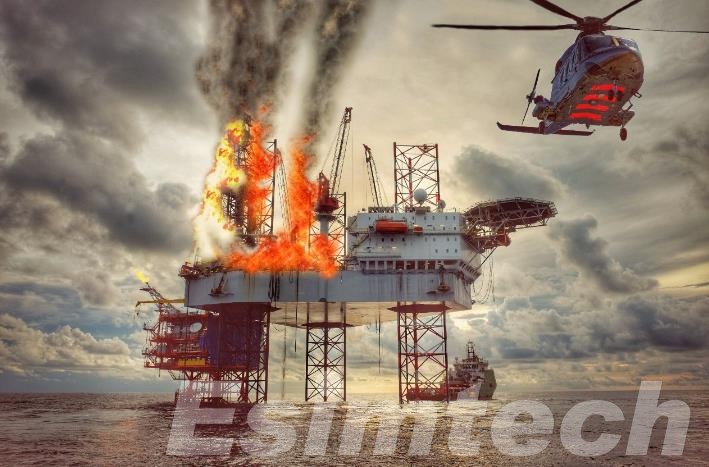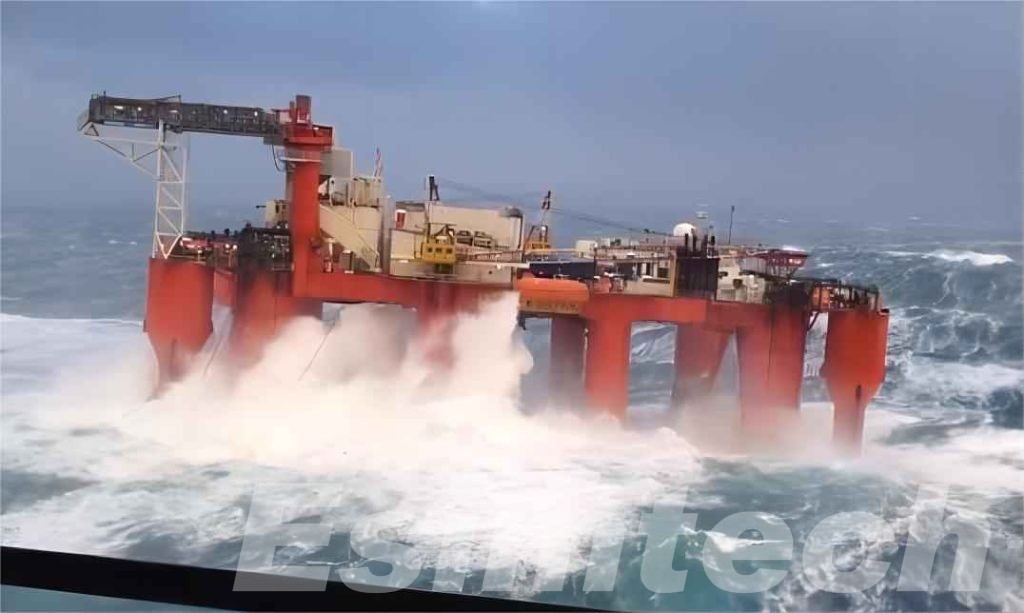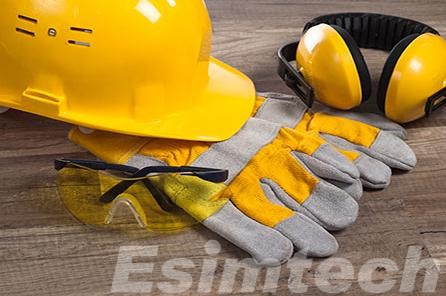Why Oil and Gas Safety Training is Important
The oil and gas industry is a cornerstone of the global economy, but it’s also one fraught with danger. From working with volatile hydrocarbons to operating complex machinery in often remote locations, the potential for accidents is ever-present. This is where comprehensive Oil and Gas safety training becomes the key to safeguarding workers, the environment, and the industry itself.
The High-Risk Nature of Oil and Gas
The oil and gas industry operates at the intersection of several inherent hazards. Here’s a breakdown of some key risk factors that necessitate robust safety training:
- Flammable and Explosive Materials: Oil and gas are inherently flammable, and even small sparks can ignite catastrophic explosions. Workers constantly interact with these materials throughout the extraction, transportation, and refining processes. Leaks, spills, and equipment malfunctions can all create dangerous situations.

- Toxic Substances: Oil and gas production exposes workers to a variety of toxic gases and chemicals, including hydrogen sulfide, benzene, and volatile organic compounds (VOCs). Inhalation or skin contact with these substances can lead to serious health problems, including respiratory issues, neurological damage, and even cancer.
- High-Pressure Systems: Oil and gas operations rely heavily on high-pressure pipelines, drilling equipment, and storage tanks. Equipment failure or structural weaknesses in these systems can result in uncontrolled releases, fires, and explosions. Workers must be trained to identify potential pressure-related hazards and operate equipment safely.
- Confined Spaces: Many oil and gas activities involve working in confined spaces, such as storage tanks, pipelines, and drilling rigs. These environments pose a unique set of risks due to limited ventilation, potential oxygen depletion, and the risk of exposure to toxic fumes.
- Electrical Hazards: Oil and gas operations utilize complex electrical systems to power machinery and equipment. Faulty wiring, exposure to live wires, and working with wet electrical components pose significant risk of electrical shock and electrocution.
- Remote Locations: Oil and gas exploration and production often take place in remote regions, far from emergency services. This necessitates a high degree of self-sufficiency and well-trained personnel who can respond effectively to emergencies until help arrives.
- Extreme Weather Conditions: Oil and gas operations can be impacted by harsh weather conditions, including extreme heat, freezing temperatures, strong winds, and heavy rain. These factors can create slippery surfaces, reduce visibility, and complicate safe operation of equipment.

- Physical Strain and Fatigue: Oil and gas work often involves physically demanding tasks, long hours, and night shifts. This can lead to fatigue, which can impair worker judgment and increase the risk of accidents.
The combination of these factors creates a complex web of risk that necessitates a multi-pronged approach to safety. Safety training plays a vital role in equipping workers with the knowledge and skills to navigate these hazards and keep themselves, their colleagues, and the environment safe.
Why Oil and Gas Safety Training Matters
In the high-pressure world of oil and gas, safety training isn’t just a check-the-box exercise; it’s the cornerstone of a successful and sustainable operation. Here’s a closer look at why investing in safety training delivers a multitude of benefits:
- Reduced Risk of Accidents and Injuries: Safety training equips workers with the knowledge and skills to identify potential hazards before they escalate into accidents. This includes understanding the properties of the materials they’re working with, recognizing early warning signs of equipment malfunctions, and knowing appropriate mitigation strategies.
For instance, training in safe work permit procedures ensures proper authorization and risk assessment before commencing tasks. Similarly, learning about the dangers of confined spaces and the importance of proper ventilation helps prevent worker suffocation. By proactively addressing risks, safety training significantly reduces the likelihood of accidents and injuries, leading to a healthier workforce and lower worker compensation costs.
- Improved Emergency Response: Accidents, while hopefully rare, can still occur. Proper training ensures workers are prepared to react swiftly and decisively in an emergency. This includes:
a. Knowing emergency evacuation procedures: Trained workers understand the fastest and safest routes to exit a facility during a fire, chemical spill, or other incident.
b.Using firefighting equipment: Training familiarizes workers with the different types of fire extinguishers and how to use them effectively on various types of fires.
c. Administering first aid: Basic first aid skills can be lifesaving in the critical moments following an accident. Training equips workers to stabilize a patient until professional medical help arrives.

By preparing for the unexpected, safety training empowers workers to take control of emergency situations and potentially save lives.
- Enhanced Productivity and Efficiency: A safe work environment fosters focus and reduces worker stress. When employees feel confident in their ability to handle potential hazards, they can concentrate on their tasks, leading to improved productivity and efficiency.
Safety training also minimizes disruptions caused by accidents and injuries. A healthy workforce spends less time away from the job, ensuring projects stay on schedule and production targets are met.
- Stronger Company Culture: A company that prioritizes safety sends a clear message to its employees that their well-being is valued. Safety training programs that encourage open communication and reporting of near misses create a culture where everyone feels responsible for maintaining a safe work environment. This fosters trust and collaboration among workers, leading to a more positive and productive work atmosphere.
- Environmental Protection: The oil and gas industry has a responsibility to operate in an environmentally responsible manner. Safety training plays a crucial role in preventing environmental incidents like oil spills and gas leaks. By learning about safe handling procedures and emergency response protocols for environmental hazards, workers can help minimize the risk of environmental damage.
In conclusion, safety training in the oil and gas industry goes beyond following regulations. It’s about creating a work environment where everyone feels empowered to identify and mitigate risks, respond effectively to emergencies, and contribute to a culture of safety that benefits workers, the environment, and the long-term success of the industry itself.
Effective Oil and Gas Safety Training Programs
Investing in a well-designed safety training program is an investment in the future of your oil and gas workforce. Here’s a closer look at the key components that make a program truly effective:
(1) General safety protocols and emergency procedures
- Hazard Recognition and Risk Assessment: Train workers to identify potential hazards in their work environment. This includes recognizing physical hazards (slippery surfaces, falling objects), chemical hazards (flammable liquids, toxic gases), and biological hazards (bacteria, insects). Equip them with tools and techniques to assess the severity of each risk and develop appropriate control measures.
- Personal Protective Equipment (PPE) Usage: Provide comprehensive training on the proper selection, use, and maintenance of PPE specific to different job roles. This includes ensuring a proper fit for respirators, understanding the limitations of gloves and safety glasses, and the importance of regular PPE inspection and replacement.

- Emergency Response Procedures: Workers should be thoroughly familiar with emergency evacuation plans, including designated assembly points and muster procedures. Training should cover different types of emergencies (fire, gas leaks, spills) and response protocols for each. Additionally, train workers on basic first-aid and CPR skills to be prepared for unforeseen situations.
(2) Job-specific training for different roles and tasks
- Specialized Training for Specific Equipment: Workers operating complex machinery like drilling rigs or wellhead equipment require in-depth training on safe operation procedures, maintenance protocols, and troubleshooting techniques. This training should be delivered by qualified instructors with experience in the specific equipment being used.
- Safe Work Procedures for Different Activities: Rigging, lifting, confined space entry, and hot work activities all require specialized training due to the inherent risks involved. Training programs should provide clear instructions on safe work procedures, permit requirements, and communication protocols for each activity.
- Regulatory Compliance Training: Staying abreast of industry regulations is essential. Safety training programs should incorporate relevant safety standards and best practices set forth by regulatory bodies like OSHA (Occupational Safety and Health Administration) or international equivalents.
(3) Regular refresher courses to keep knowledge up-to-date
- Schedule Periodic Refresher Training: Safety knowledge retention is key. Schedule refresher courses at regular intervals, typically annually or biannually, to ensure workers stay up-to-date on evolving protocols, best practices, and emergency procedures.
- Scenario-Based Refresher Training: Integrate scenario-based training into refresher courses. This allows workers to revisit and refine their skills in responding to emergencies or handling unexpected situations.
- Technology-Aided Learning: Utilize online learning modules or mobile apps to provide easily accessible refresher training for workers. This allows for flexible learning and knowledge reinforcement throughout the year.
(4) Hands-on training with simulations and practical exercises
- Interactive Training Techniques: Move beyond traditional classroom lectures. Utilize interactive learning methods like emergency simulations, role-playing exercises, and practical skill demonstrations to keep workers engaged and reinforce learning.

- Virtual Reality (VR) and Augmented Reality (AR): Emerging technologies like VR and AR can create immersive training environments that allow workers to practice procedures in a safe, virtual space.
- Skills-Based Assessments: Incorporate practical assessments to evaluate a worker’s ability to perform critical safety tasks effectively.
The Ongoing Need for Oil and Gas Safety Training
The ongoing need for oil and gas safety training stems from several factors.
Firstly, the industry constantly pushes technological boundaries in exploration, drilling, and refining techniques. New equipment and processes necessitate revised safety protocols and require workers to be thoroughly trained on their safe operation.
Secondly, the regulatory landscape is dynamic, with government agencies updating safety standards to address emerging risks. Regular training ensures workers stay abreast of these evolving regulations and adhere to the latest best practices.
Finally, complacency can set in over time, even among experienced workers. Refresher courses and ongoing safety discussions serve as crucial reminders of the ever-present hazards and the importance of maintaining vigilance.
By continuously adapting training programs and fostering a culture of safety awareness, oil and gas companies can effectively mitigate risks and ensure a safe working environment for all.

